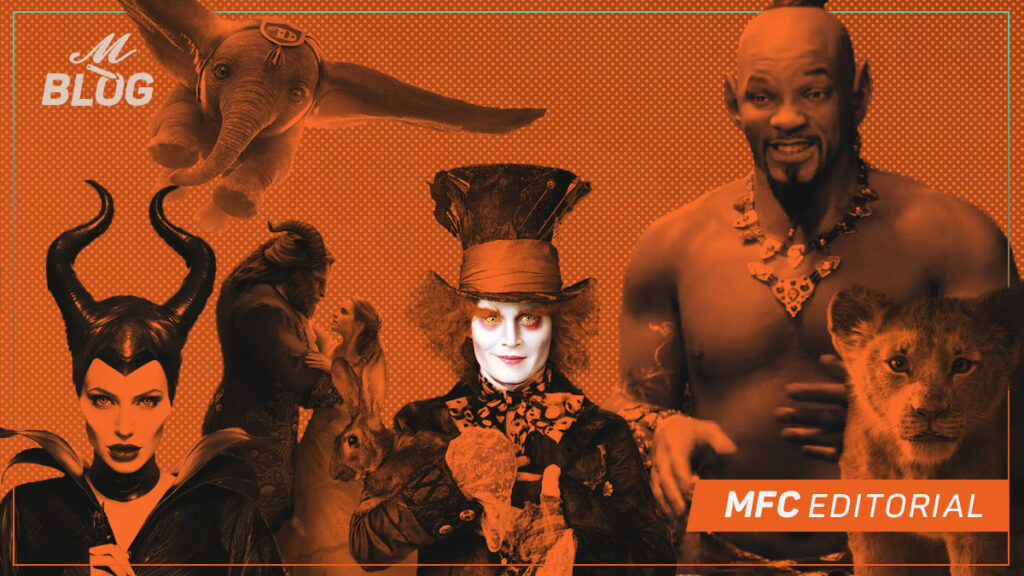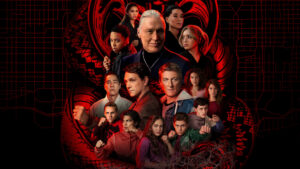Live Action Disney: Novelty or just nostalgia?
MFC Editorial
Disney became the great cinematographic giant that it is today thanks to its revolutionary animation style. Using techniques and equipment developed by themselves, they promoted a multi-million-dollar industry through which they told many of the most emblematic stories of cinema.
With the passing of time, Disney‘s classic animation style was gradually discarded in favor of more modern techniques, such as the computer animation that characterizes Pixar and, more recently, remakes and live action adaptations of its classic titles, heavily supported by CGI and real actors.
In addition to being responsible for the Marvel Studios Cinematic Universe and the new Star Wars installments, Disney prepares new adaptations of Aladdin and The Lion King, films that, in spite of having a large base of fans eager to enjoy them, have received a wave of criticism accusing Disney not only of wanting to profit from the nostalgia of many, but of disrespecting the value that those classic titles have in the history of cinema.
Learn what’s to come in Phase 4 of Marvel Studios Cinematic Universe here.
Some people consider that each remake offers a new perspective of the original story, while others say that Disney has run out of ideas and does nothing but cash on the nostalgia of the generations that grew up with their films. At MFC Editorial we reflect on this.
Beginnings
Disney‘s journey into live action adaptations began with The Jungle Book: The Adventure Continues (1994), the forgotten sequel to The Jungle Book (1967), a first attempt to tell the story with a more realistic perspective. The film did not go very well, but the subsequent releases of 101 Dalmatians (1996) and 102 Dalmatians (2000) were quite successful.
It wasn’t until 2010 that, with the premiere and the overwhelming success of Alice in Wonderland by Tim Burton, Disney officially began its journey through the remakes and live action adaptations of its titles. Although many people attribute their success to the novelty of the 3D films, Disney was confident enough of the value of their product to work on a sequel, Alice Through the Looking Glass (2016), a release that went largely unnoticed in comparison to its predecessor.
Even so, the success of Alice in Wonderland was enough for Disney to dare adapting several of its classic titles to live action. Its next premiere was Maleficent (2014), where we are told the story of Sleeping Beauty (1959) from the perspective of its antagonist. Starring Angelina Jolie, Maleficent was instantly a resounding success, making around USD 758 million worldwide, becoming the fourth highest-grossing movie of 2014 and earning an Oscar nomination for Best Costume Design.
Maleficent was the film strategy that proved to be the most successful, where small alterations and additions to the original story, added to the prominence of an already positioned figure in the industry, would become the new formula for the upcoming adaptations that took over the movie theaters of the world.
This is how Cinderella (2015) came to theaters, making about USD 543 million worldwide, and The Jungle Book (2016), breaking box office records with earnings of up to USD 966 million worldwide and positioning itself between the 40 highest-grossing films of all times.
Downfall
Until then, most Disney’s remakes had been very well received. It wasn’t until the release of Beauty and the Beast (2017) that critics and fans alike began to question strongly the new path that Disney had taken.
The new version of Beauty and the Beast turned out to be a movie adrift. Trying to adapt the animated classic of 1991 to contemporary themes and solve plot points questioned by the most demanding revisionists, they lost sight of the essence of the film: the growth of the characters and the development of their relationships.
Now, in 2019, it seems that history repeats itself with Dumbo, the new Disney live action adaptation, a film from which critics rescued the value of the performances in contrast to an insipid and heartless script by comparison to the original.
Recently, Disney was target of criticism once again. With the release of the trailer for Aladdin, to be premiered in 2019, fans raised their voices against the new version of the Genie, now played by Will Smith. The root of the claim started with the strange appearance of the character, whose intervention of CGI seems to cause some dissonance with the naturality of the actor’s movements, moving on to the abysmal difference in the personality of the new character opposed to the original interpretation by Robin Williams.
Novelty or just nostalgia?
Disney keeps working to bring more and more remakes and live action adaptations of its classic movies. So far, the confirmed titles are The Lion King (2019), Maleficent: Mistress of Evil (2019), Lady and the Tramp (2019), Mulan (2020) and Cruella (2020).
Although many remain against these new films, insisting that Disney is profiting from the nostalgia of its audience and that the company has been on a strike of creative laziness, there is still a fan base that support these proposals, affirming that they are not only about remakes of stories that are being forgotten, but about new perspectives and styles to tell them.
For fans, these are a new way to enjoy they favorite stories; for the purists, the original films will always be there. What is guaranteed with the launch of all these projects is that the titles that once filled us with joy will once again lead the movie theaters of the world, bringing these great stories closer to new generations.







0 Comments